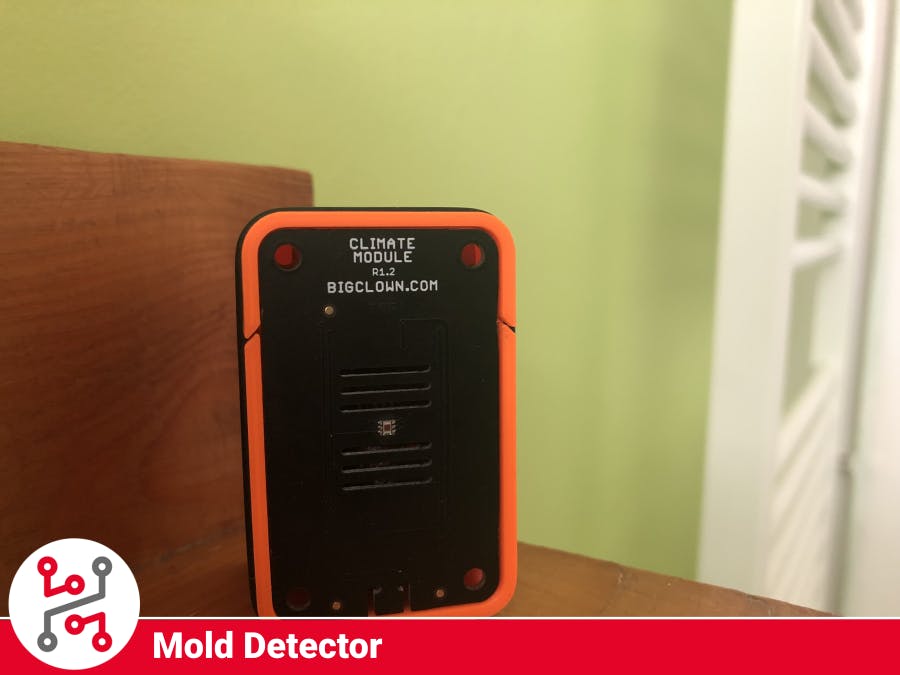The mold can be a big problem in the house. It looks bad and it can be harmful to you and your family. You can build a smart monitor that will watch the humidity in your rooms. Follow this guide where you will find out how to do it with HARDWARIO IoT Kit, NODE-Red and Blynk.
We will use the Climate monitor kit for monitoring the humidity in the room so you can make some proper actions if the humidity level is too high. You can work with the data or send it to some other devices that will do the work for you.
For this project, we will use the firmware that is already included in the HARDWARIO Playground.
Thanks to the low-power solution this device can run up to two years on just AAA alkaline batteries.
1. Build HardwareYou will need a Climate monitor kit from HARDWARIO IoT Kit. It contains the Core Module, Mini- Battery Module and Climate Module. Assembly is really simple, you just need to put Mini-Battery Module put Core into it and then the Climate Module.
You can watch the video below to see the full assembly guide.
Once you have the assembly done, you can move to the next step.
2. Flash firmware- Download HARDWARIO Playground.
- If you bought the ClimateMonitor Kit you will receive the Core Module with the firmware on it.
- Otherwise you can see documentation page on how to flash the firmware with HARDWARIO Playground.
- You will need the bcf-radio-climate-monitor firmware for this project.
- After all this is done, you just have to wait for a moment and let the firmware to be flashed to the Core Module.
- You can get onto the next step.
You need to pair the Core module with the Radio dongle that you are using, follow the instructions below to see how it is done.
The same thing will go if you are using a Raspberry Pi as a server, just access the Raspberry through the IP address instead of the Playground
- Connect your USB Radio Dongle to your computer.
- Open HARDWARIO Playground
- Click Start Pairing the LED on the dongle should start blinking
- Connect the device that you want to pair into your computer or insert the batteries.
- Wait for the device to appear in the table
- It should add the device with the Alias: climate-monitor:0
- Click Stop Pairing
After you did all this you can unplug the device from the computer and insert the batteries, it will run on them without a problem. Next steps will be done on the computer, so you can leave the device and focus on the Playground.
4. Import NODE-Red flowOpen Node-RED in the Playground or Raspberry Pi and import the flow from here. In the Menu -> Import -> Clipboard. Do not forget to hit "Deploy" in the top right corner to apply the changes.
In this flow you see just the monitor for the humidity, but the Climate Module itself has a lot more than just that. You can add more MQTT topics and measure e.g. temperature, light in the room, etc.
You can look into the documentation if you want to know more about other topics.
5. Blynk IntegrationThis project is ready for Blynk integration. How to set up Blynk with your HARDWARIO Playground is described in this guide.
Follow the guide if you want to make your own blynk app. If you want to use the one specified for this project in the Blynk app click this Icon and scan the QR code bellow.
This app sends you the notification when the relative humidity is above 60%, you can of course change the value when the notification is sent in the NODE-Red flow. Just open the Notification function and change the 60 to something that fits you better.
You can also add some gauges in this application so you can see all the values.
SummaryYou can have more of these modules in your house so you don't have to worry about the mold anymore. Radio Dongle can take a lot of the devices on its own.
Feel free to ask any questions about this project.
- Visit HARDWARIO page on hackster.io for more interesting projects or go directly to their website
- Go to HARDWARIO documentation to learn more about their modules and other possibilities of the platform.
- Try more firmware from HARDWARIO Playground or write your own, it is easy to start.
- Because everything is Open source you can get all firmware on GitHub, get some inspiration and try to make your own applications.
- Get your own HARDWARIO Hub to replace your computer in this project so you have always access to your applications.
- Check out more applications that can be used with HARDWARIO IoT Kit in Integrations section.

















Comments
Please log in or sign up to comment.